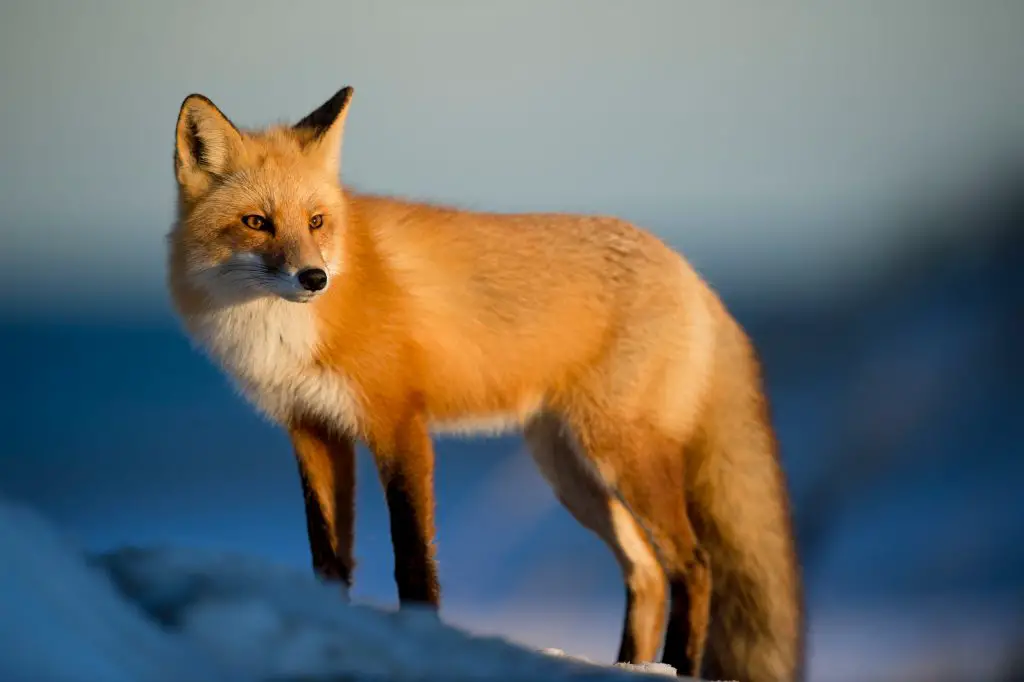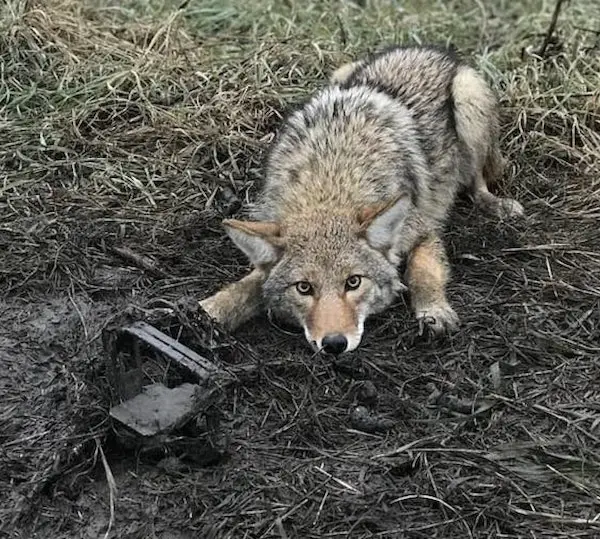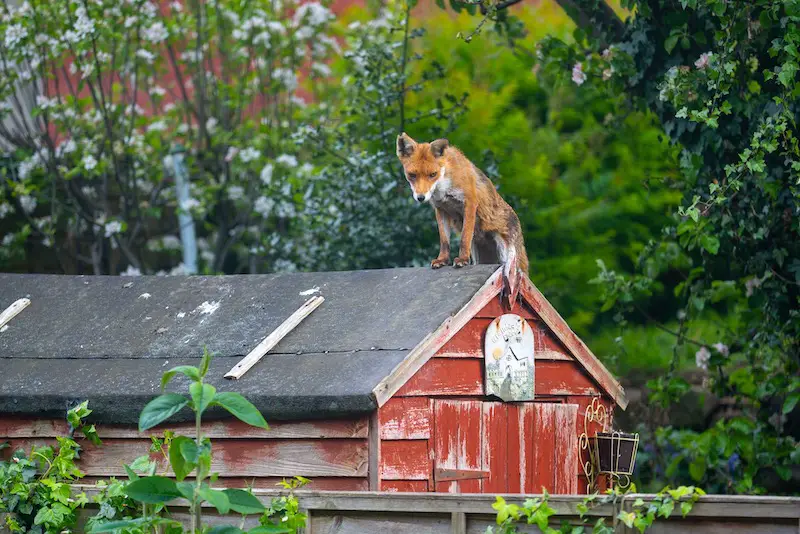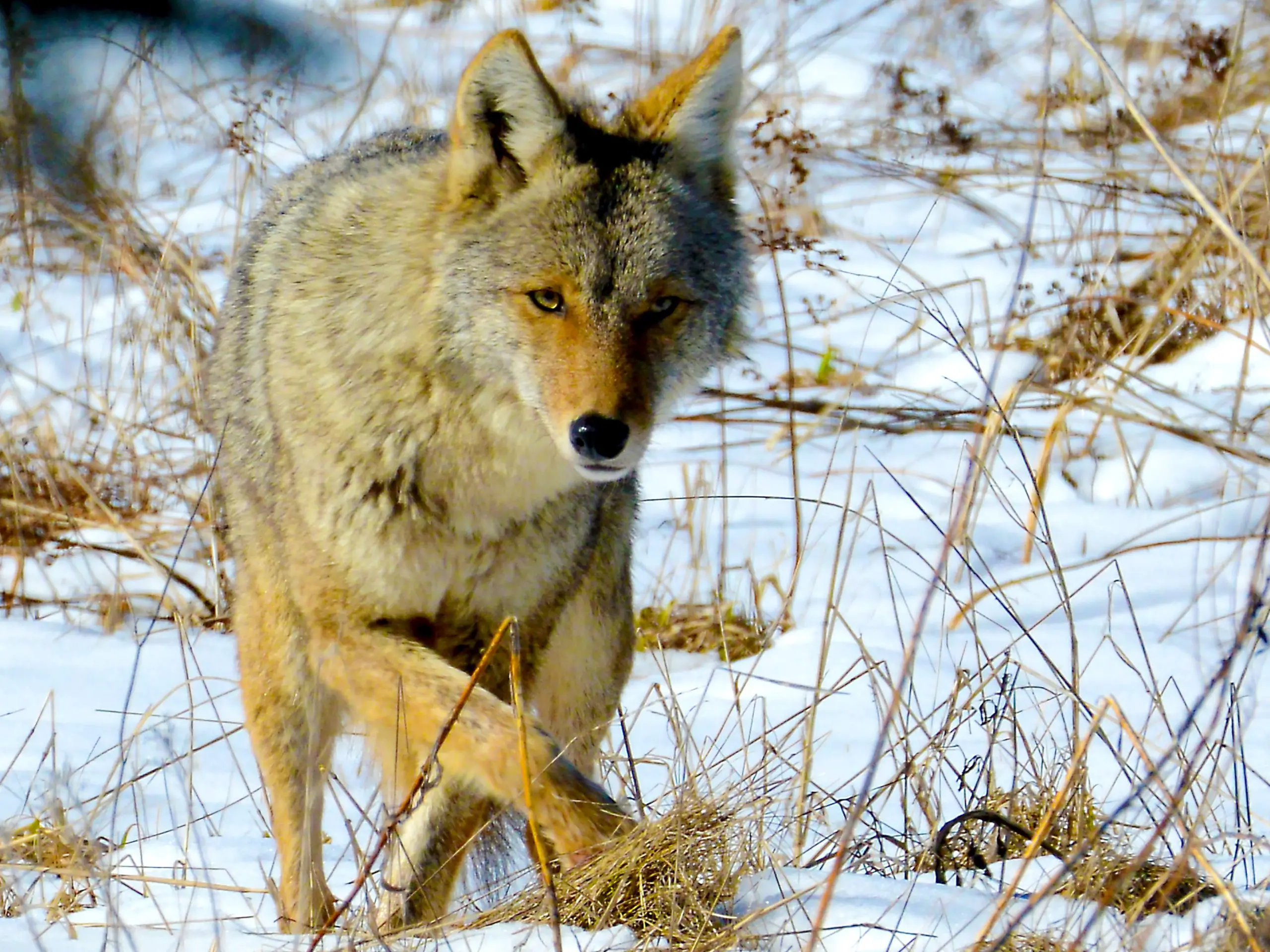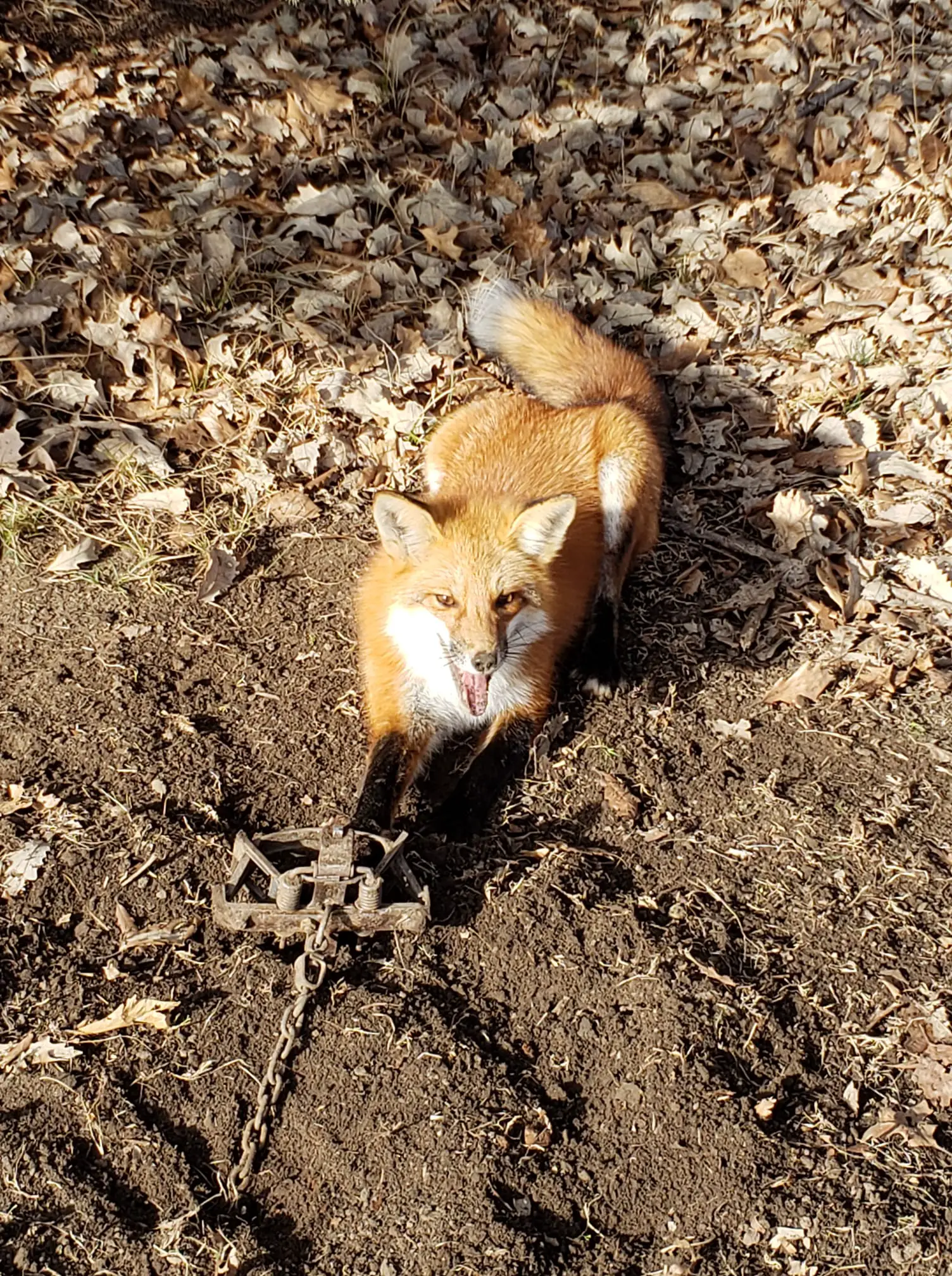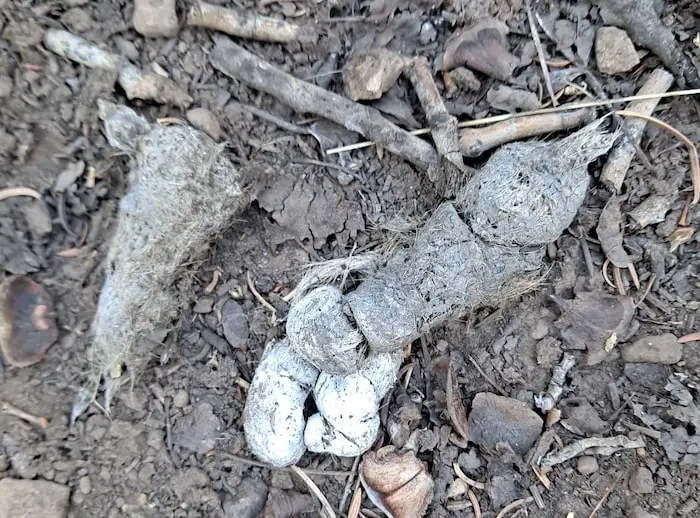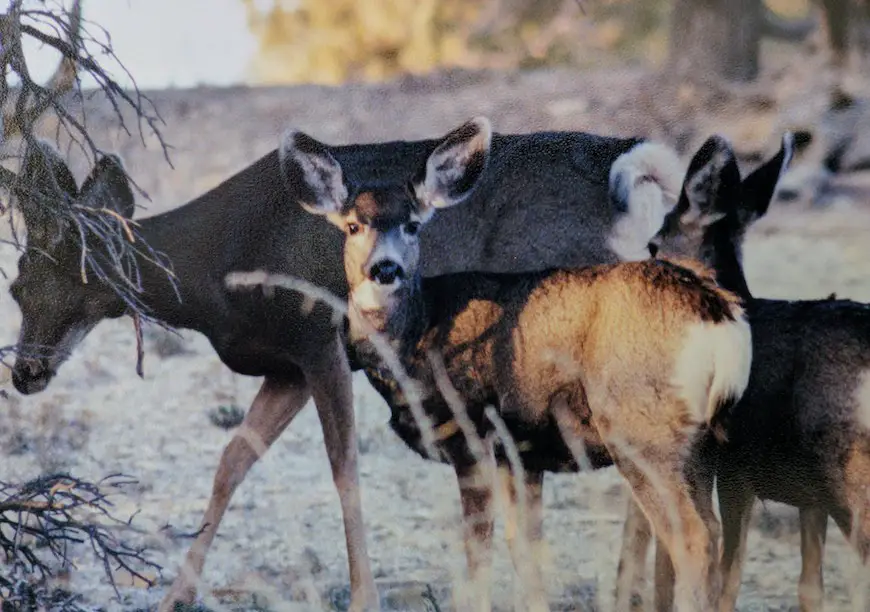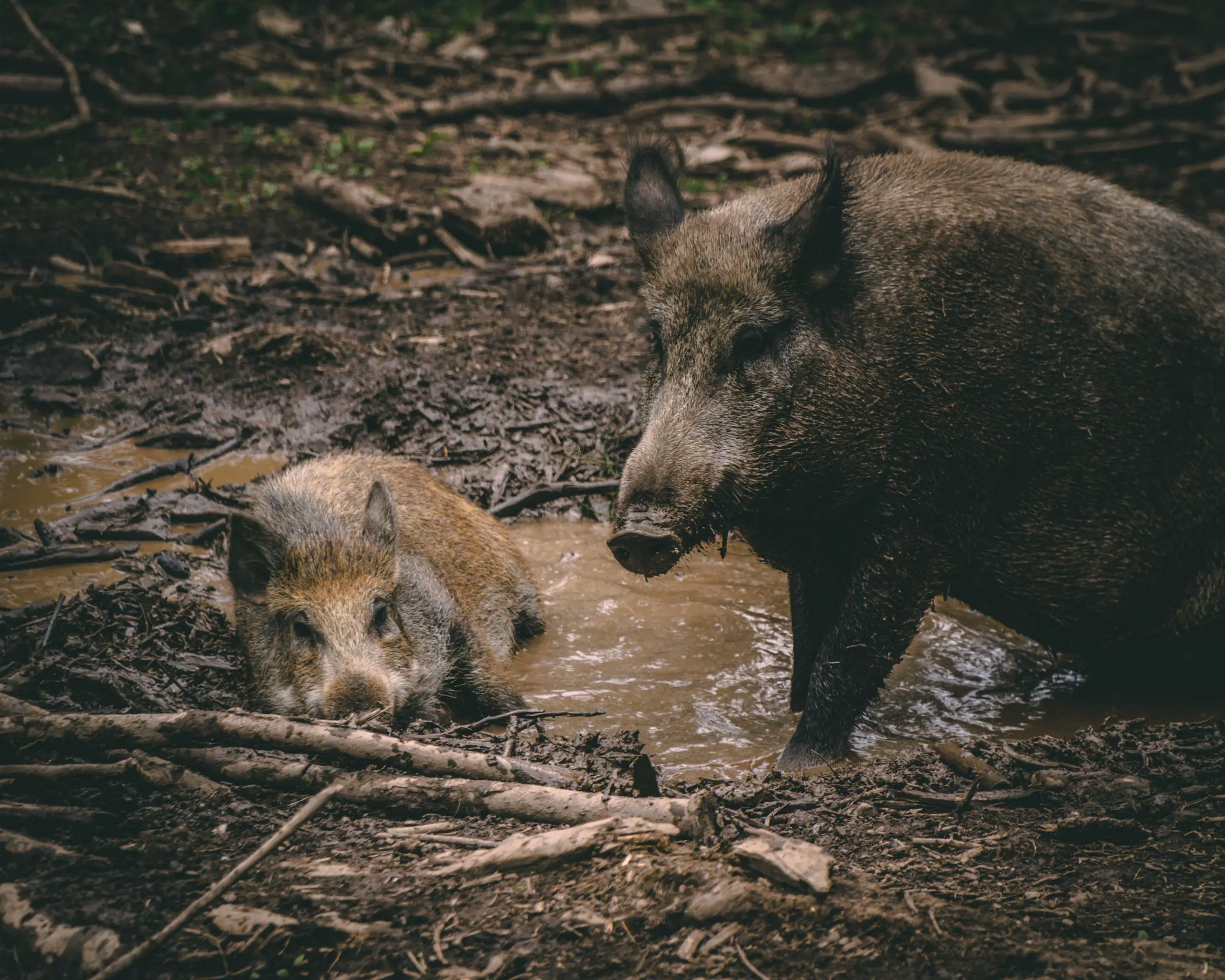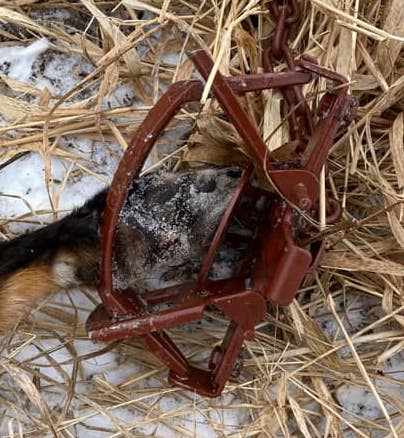What is the Difference Between a Coyote and a Fox?
Hiking in the woods or maybe even in your backyard you may see a coyote or a fox but have you ever wondered what the differences are? Is what you saw a fox or a coyote?
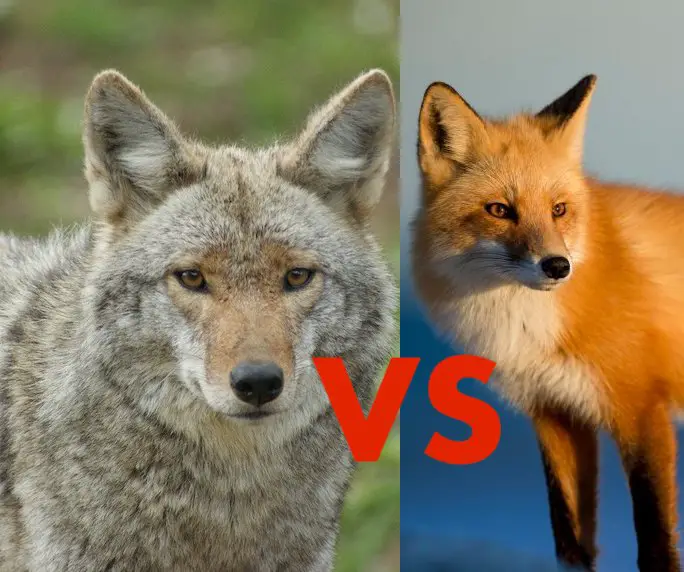
Some foxes look very similar to coyotes and visa versa. We will go over some of the differences and helpful characteristics to help you know the difference between a fox and a coyote and be able to know what you are seeing.
What a Fox Looks Like
The two most common fox varieties are the red fox and the gray fox. These two foxes are found through out North America.
The gray fox is found more in the United States and Central America while the red fox is found in most of the United States and Canada. Both are very common and do exist in the same areas.
While most coyotes are similar in color there are at least four different kinds of fox in North America and across the world there are many more.
Gray Fox
A gray fox has many color similarities between coyotes and may be confused based on these color similarities. The size differences help identify and tell the difference between them.
Gray fox have silvery or gray, back sides and tail with a white belly. Between the gray and white is a red brown color. Sometimes red brown color is very vibrant on a gray fox.
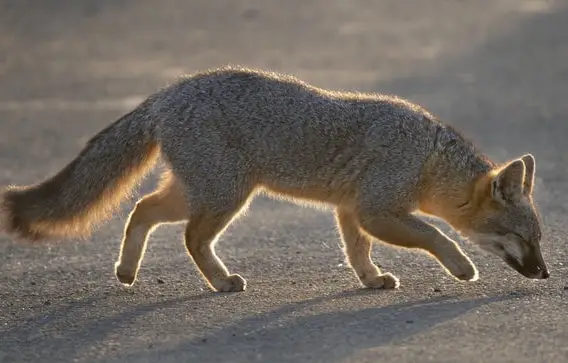
A coyote has many of the same colors in its fur as a gray fox but are usually lighter in color. This can be a little confusing especially if you only saw a glimpse of the coyote of gray fox.
Red Fox
A red fox is usually very different from a coyote in colorations and range in color from blond to bright orange color on their sides and tail. The red fox feet are usually a darker brown or black color with a white front and belly on them.
Red fox are more common fox used in the media and logos. Like in the well known browser Firefox. The red fox is a very iconic North American Animal.
Other Fox Types
So the two other types of fox is the kit fox and the Arctic fox. These two fox are a lot more rare that the gray or red fox.
The Arctic fox reside in the Northern parts of the world as close to the arctic as you can get on land. The fox can change colors with the seasons to better blend in with its surroundings.
The kit fox lives in the western deserts and and are not very common to come across they are not likely to be confused with a coyote because they are blond sandy color.
What a Coyote Looks Like
Coyotes have a little more random of color patterns but can be similar to fox colors. Some foxes in other parts of the world have very similar color patterns to the coyote.
A coyote will have a gray and black colored back with a white belly and front. Their legs are more blond to brown color. In other regions these colors are overpowered by a strong brown color that overpowers these colors and makes them look a more uniform color.
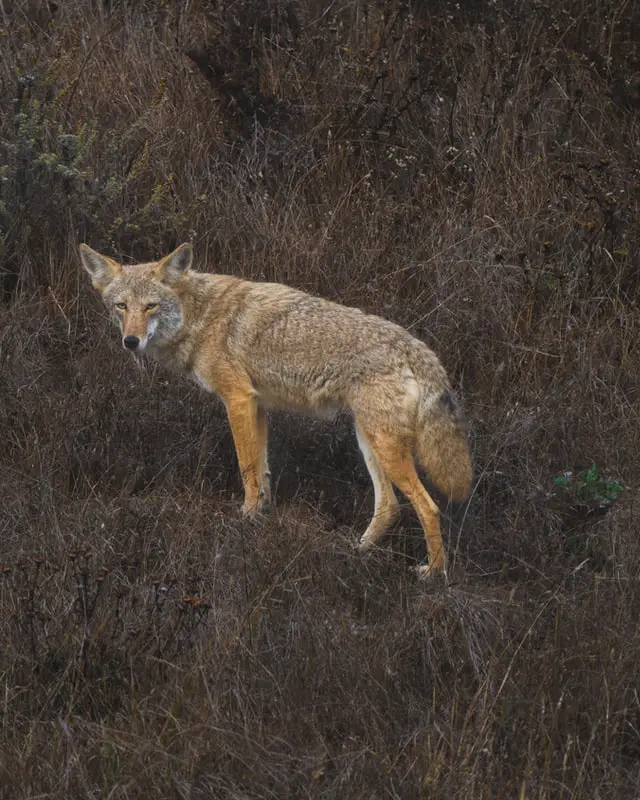
Coyotes also have some rare variations that will cause them to appear more white or more black depending on the genes. This may also have to do with coyotes breeding with domestic dogs and having odd colors. Check out our article about black coyotes to learn more about black coyotes and where you might see one.
Seeing Coyotes and Fox In the Wild
One of the coolest ways to see animals in the wild or in your backyard is to set up a trail camera or camera trap. We have captured many animals on trail camera including fox and coyotes.
This can be a good way to view animals because they are elusive and nervous around people. I have hiked many times through areas and not seen a fox or coyote but I can get them on camera.
Related: Check out our friends Backyard Trail Camera to see more awesome trail camera footage.
A fox is more likely than a coyote to be living in your backyard. Fox are smaller and can dig a burrow or live under a shed. Coyotes are larger and like to be more secluded.
Does a Coyote Weigh More Than a Fox?
A fox weighs less than most coyotes. A fill grown wild fox can weigh about the same as a juvenile coyote. The fox will usually weigh between two and thirty pounds.
In contrast a coyote will weigh up to around fifty pounds and young ones will weigh as low as fifteen pounds. In most cases a coyote will outweigh a fox.
How Tall Is A Fox Compared To A Coyote?
A fox is shorter than a coyote. A coyote stands at the shoulder about twenty four inches (60 cm) high according to Britannica. This is about the size of a medium sized dog.
This means that coyotes are larger and more aggressive than most dogs. You can learn more about protecting you pets from coyotes in our article here.
According to All Things Foxes a red fox is fourteen to twenty inches tall to the top of their head. Even the tallest red fox only comes up to the shoulder of an adult coyote. A fox has to watch out for a coyote as a predator.
From Nose To Tail Which Is Longer A Coyote Or A Fox?
Coyotes are quite a bit bigger than fox. They are 3 to 4½ feet long (a bit over 5 feet with the tail). Coyotes may appear bigger because of how poofy their fur looks.
Foxes on the other-hand are much smaller they range in length from one to three feet in length. Their tails are sometimes longer than a coyote tail and can cause their overall length to reach five feet.
What Sounds Does A Fox Make?
You may think a fox is a dog so it must bark but you would be wrong. They do not bark like a domestic dog, the more make a sound like a high pitched howl mixed with a bark. It may even sound like a screech if you hear it in the woods.
Other sounds a fox make may sound like an owl. The will sometimes make a more bird like sound. This sound may be easily confused with a bird and you may not even know that it was a fox if you never see it.
What Sounds Do Coyotes Make?
Unlike a fox, coyotes can make similar sounds to dogs but they are much more high pitched than a dog. They make more of a howl and yipping sound together or short howls.
If you hear a long deep howl that will usually be a wolf and not a coyote. A short howl will last two the five seconds at the most and will usually be followed by short yipping.
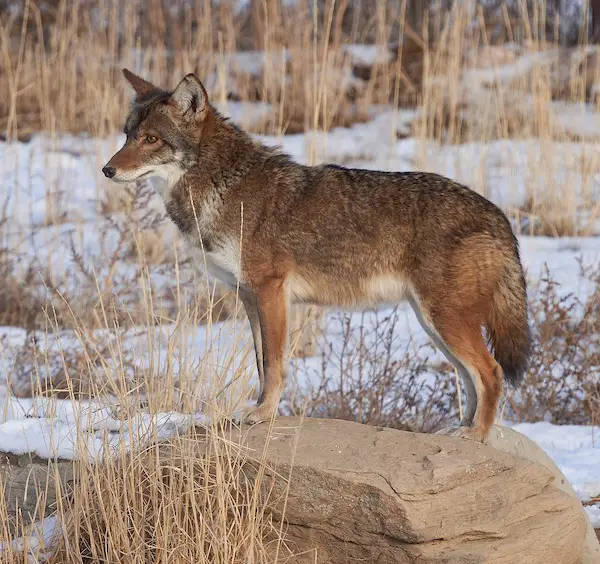
Often times coyote hunters will use all the sounds a coyote will make to attract them. Coyote howls may be mating calls or territorial calls to let other coyotes in the area know that they are there and they are the boss.
If coyotes are being too loud and you need to keep them away you may checkout our article on how to keep coyotes away.
What Are The Similarities And Differences In Coyote And Fox Diets?
Fox and coyotes will both eat small rodents such as mice, voles, or rats. These food sources are vital to coyotes and fox. Both will also make a meal of another dead animal that they come across.
Coyotes on the other hand will hunt larger game such as white-tailed deer or mule deer in the western states. Many coyotes can take down a deer on their own but when they hunt in packs they will take full grown bucks and does.
You are more likely to find a coyote than a fox on a large animal carcass or eating road kill.
Related: What does a coyote eat?
Are There Different Behaviors Between A Fox And A Coyote?
Coyotes and fox will occupy a lot of the same habitat and run some of the same trails. Coyotes often like to take the more open trails while fox are more comfortable being in thicker brush or grass.
You are more likely to find a fox living in your backyard than a coyote. Coyotes like to have more space and in urban areas coyotes will travel through your yard while a fox will take up residence.
A fox will spend more time in a den than a coyote. Coyotes use dens only for raising pups.
Differences Between Coyote and Fox Tails
Fox tails are very soft and the hair on them tends to stick strait out. In the winter a foxes tail can look almost as big as the foxes body. The winter coat is very thick especially with the red fox.
When a fox walks or runs it must hod its tail up because it is so long. When a fox walks its tail will point out behind it making it look bigger.
A coyote tail will be similar in size to a fox tail even though their bodies are bigger. The tail har will point towards to bottom of the tail and be thicker and courser. Coyote tails can hang down when walking and usually won’t touch the ground.
Coyote and Fox Footprints
Because coyotes are bigger than fox their footprints will be larger most of the time. To tell if you have spotted a coyote track in the mud or dirt you should look at where the toes are pointing.
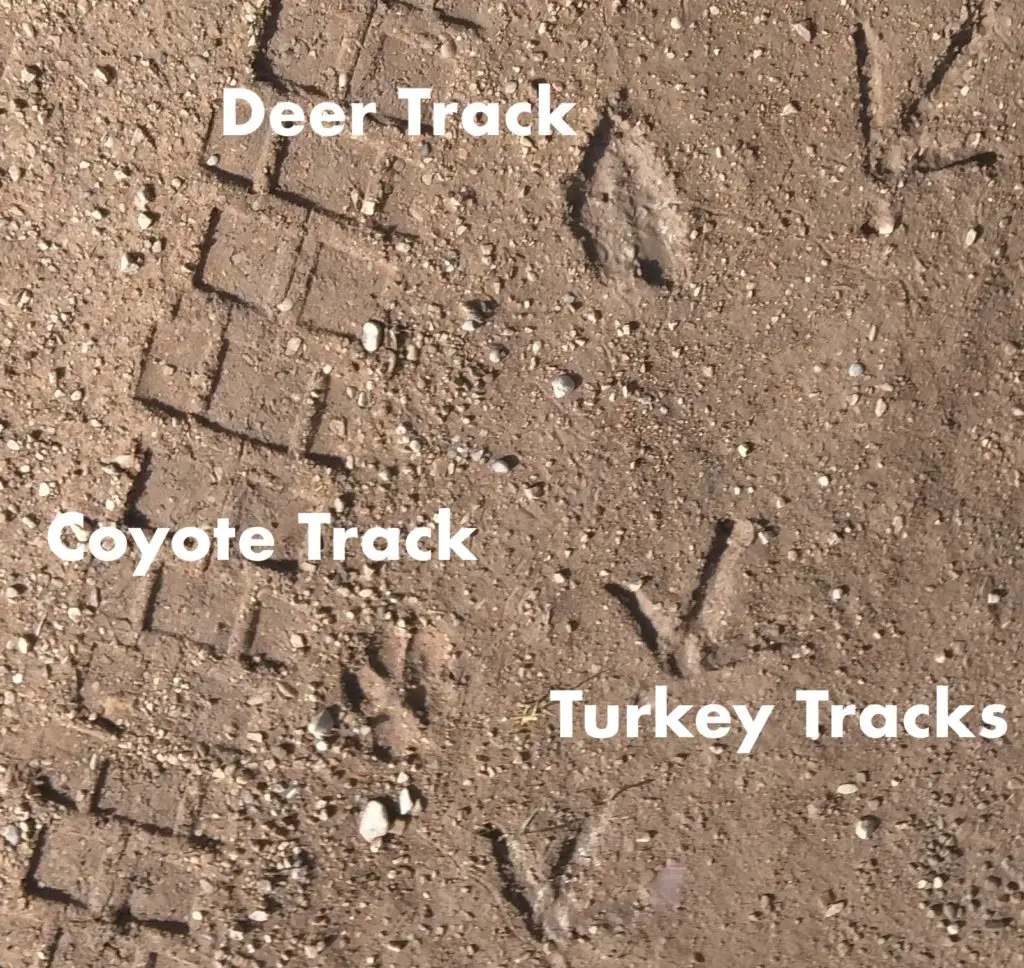
I like to compare them to deer tracks and if I could place a deer track over the coyote track and cover it up and the toes point towards the middle of the track then often it is a coyote track. A coyote stride will usually be longer and more spread out.
Fox tracks are smaller and if there are claw marks they will point more strait forward. They will also have a smaller stride and may only be one foot apart or less. A fox leaves a lot more tracks on the same path.
Will a coyote kill a fox?
Coyotes will kill a fox if given the chance and will also eat them. Coyotes see a fox as competition and a meal if they can catch them. I was out in the mountains and we saw a coyote with the back half of a fox in its mouth. It may have been taking it to its den.
Fox and Coyote Urine
When a fox or a coyote mark their territory with their urine it can attract a fox or a coyote. They tend to mark their territory when ever they want as the slowly meander along trails hunting and smelling all the smells along the edges much like a dog does.
Which Animal Faster A Coyote Or A Fox?
A fox will usually be a bit more agile than a coyotes being able to turn and dodge faster than a coyote but a coyote is much faster than a fox out in the open. That is one reason a fox likes the cover more than a coyote. It gives him an escape if a hungry or mean coyote comes along.
Coyote Fur Vs. Fox Fur
Coyote fur is a course and fairly hard and it is hunted and trapped for the fur. Coyote fur is used on lining on the edges of a hood on a coat. It is good at repelling snow and helps keep the snow off your face.
A good western coyote fur can sell for $50 to $100 and some even get higher prices.
Fox fur is a lot softer and less course than coyote fur. It is trapped as well but is not as popular among fur buyers.
Can Coyotes Or Foxes Climbing Trees?
A coyote can not climb a tree, sometimes they may be able to get a little ways up a tree if it is horizontal and they can climb it. Other than that you will not see coyotes in a tree.
On the other hand just like a cat a gray fox can climb a tree. They will often climb trees to get away form coyotes and other predators or when playing or searching for food.
There are many awesome similarities and differences between a fox and a coyote and I hope we answered some of your questions. Check out some of our other articles at the bottom of this page. Here are a few facts that we have collected to share a little more about coyotes and fox.
Quick Facts About Fox and Coyote Differences
- Coyotes look more like wolves. They have many physical characteristics similar to a wolf, especially in the face. Foxes resemble dogs. A bit like a red sheltie (a miniature version of a collie – like Lassie).
- Foxes have longer, much softer coats with a variety of colors. Their tails are lengthier and fluffier.
- Foxes are small, 1 to 3 feet in length (5 if you count the tail). Coyotes are 3 to 4½ feet long (a bit over 5 feet with the tail).
- Coyotes live only in the Americas (although they continue spreading further into Canada, Central, and South America). Foxes are global.
- Foxes weigh 2 to 30 pounds. Coyotes weigh 15 to 50 pounds.
- Foxes live alone except for breeding season. A coyote will often live with a pack.
- Coyotes sleep above ground. Dens are used only for mating season and raising pups. Foxes prefer to live in a den or burrow. It has tunnels and defined chambers.
- The coyote has a higher voice than a wolf but lower than a fox. The fox’s voice is high-pitched with a whining or yelping sound.
- Foxes eat (what do foxes eat) small animals, vegetation, fruit, and insects but avoid grains. Coyotes will eat anything available except for toads.
- Dogs are omnivorous. They eat what we eat, including fruits and vegetables (and sometimes junk food). Wolves are strictly carnivorous. Also, wolves can eat up to 20 pounds of food at once. Dogs don’t – or shouldn’t – do that.
- Wolves avoid people. They want nothing to do with the human population and usually run the other way. Dogs often walk right up to you.
- Wolves are intelligent problem solvers. They can think through and solve an issue. Most dogs must be shown the solution – sometimes repeatedly – before they can follow through.
- Dogs play for fun, for bonding time, and because they have the energy to burn. Wolves play to learn, grow, and develop survival skills, social skills, and leadership qualities. Play is an essential part of growth and maturing.
Beth Criman one of our writers worked on this article. You can become a writer for THF Outdoors follow this link.
